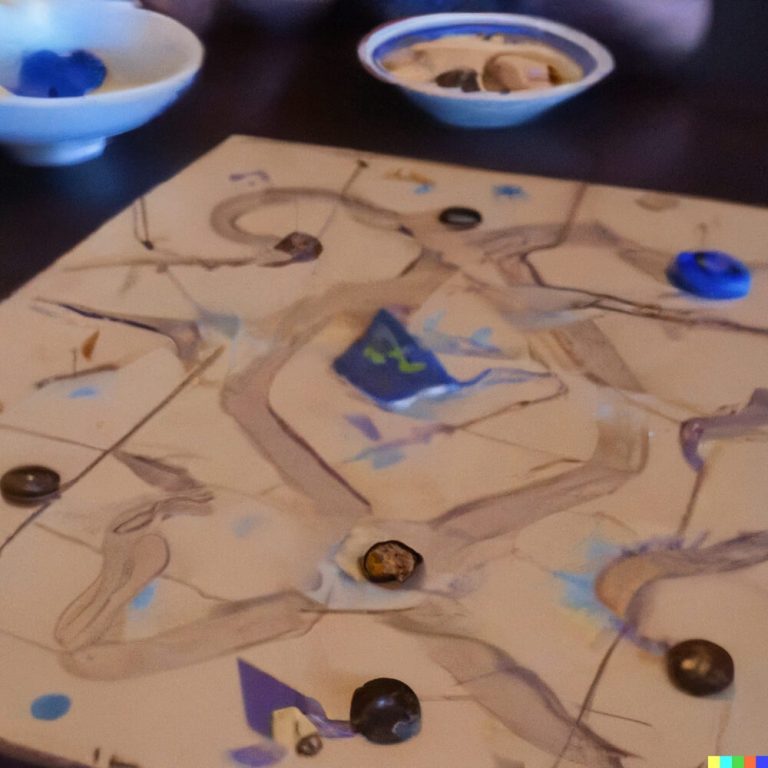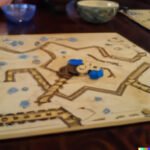Generational Appeal of Marble Board Games
Marble board games have been around for centuries, and their enduring appeal is evidenced by the fact that they remain a popular pastime amongst many generations – from those who experienced them first-hand while they were growing up, to children today.
The main attraction of marble board games lies in their timelessness – they can be passed down through generations and still remain a source of enjoyment. In addition to their appealing visuals, these games require an element of strategy, which makes them great for learning core problem-solving skills at an early age. Furthermore, the social aspect of these pieces is also part of what has made them so successful throughout the years – as multiple people can play together or take turns at one another’s pieces.
This combination of visual appeal and intellectual stimulation allows for marble board games to stay relevant through the changing times. The timelessness of these pieces does not just apply to those who experience them first-hand, but also younger generations with access to technology. The simplicity of marble board games provides players with a respite from constantly being connected on devices; it allows players share quality time without any distractions from digital sources.
It is this combination that makes marble board games so attractive across different age groups and why they continue to remain popular throughout the years despite modern technological advancements.
DIY Marble Board Games
Making your own marble board game is a great way to spend some quality time with family and friends. Most of these vintage games can easily be recreated using basic crafting materials like cardboard, felt, glue, scissors, rulers, and marbles—you may even find yourself making additional boards to go along with the traditional pieces that come with the kits.
To make your own vintage marble board game, you will need several pieces of cardboard or thick paper cut or torn into large squares or long strips depending on the style of game you are making. Mark each piece with lines spaced one inch apart in both directions. Glue a thin layer of felt onto the entire board or cover it entirely in colored marker to give it an even pattern (this will allow for the use of multiple colors). Once the felt is dry, place two rows of glued-on pebbles or other flat objects around the edges on either side—these will act as bumpers so if a marble rolls off it won’t keep going instead of bouncing back onto the playing field. Secure small magnets to each side this helps to stop balls from escaping when playing against opponents. Create obstacles using objects like pegs, blocks, stones, etc., and set up a starting line and finish line at opposite sides of the board for competition play. Make sure all pieces are firmly secured before any players step up! Have fun!
Trends in Marble Board Games
In recent years, there has been a growing trend of unique and innovative variations of the traditional marble board game. Many games now feature custom pieces that can be used to create a more tactile gaming experience. Additionally, theme based marble sets are becoming increasingly popular, allowing players to engage in exciting narratives during play. These themes range from popular video games to historical settings. Furthermore, interactive marble board game sets that incorporate electronic components such as lights and sounds have also emerged on the market, offering an immersive experience for players. Lastly, giant floor level marble boards are becoming increasingly popular – great fun for those in search of larger-than-life competitive experiences with friends and family!
Collectors Guide
When looking for authentic vintage marble board games, there are a few determining factors you should look into. First, ask the seller about the game’s history and try to determine when it was made. This can both reveal the age of the game as well as the authenticity of it. It is also important to inspect the game’s pieces and surfaces for original condition. Knowing what materials were used in its construction can offer clues on origin and date. In addition, older marble board games may have an embossed stamp or branding logo somewhere that would indicate who originally created it. Finally, you may want to refer to an antique expert or collector if you need assistance identifying an item’s true age and authenticity.
Marble Board Game in Pop Culture
The classic marble board game has been embedded in popular culture for decades. In the 1960s, the show “The Flintstones” featured characters engaging in a marble clusterboard game, bestowing its status as an all-time favorite game to children and adults alike. In 1996, a parody of the Marble Board Game was included in the hit film “Space Jam” starring Michael Jordan and Bugs Bunny. More recently, TV shows such as Fuller House and Doctor Who have both included scenes that referenced characters playing the board game.
The cultural resonance of the marble board game hasn’t only been visible onscreen but can also be heard in music. Taylor Swift’s 2014 song “Welcome to New York” includes a brief reference to playing :”the marbles rolling ‘cross the living room floor”. The 40s swing band Linn & Marshall even created a song called “Marble Game Boogie” explicitly devoted to the beloved childhood pastime.
Through its appearances in pop culture spanning several decades, it’s clear that vintage board games remain beloved by audiences today.
Variations
Over the years, many variations of the classic marble board game have been added. One popular variation is in which each player has five to nine marbles, a tray, and various obstacles such as cups or trays with slightly larger holes for a ramp effect. The objective is to be the first to maneuver one’s marbles around various obstacles until they all reach the finish line.
Another popular variation is a game of solitaire in which one uses either 10, 15, or 16 marbles and attempts to arrange them in one big pile by bouncing them off the other walls on the playing board. A ‘double-play’ game includes two players who alternate turns; however, instead of merely pushing their own set of marbles through an obstacle course, they also move each other’s marbles as well as their own.
Other versions include a sumo wrestling variation where two players play against eachother using sets of three opposing marbles whose goal is to push each other out of a designated circle. Lastly, there is a modern version that eliminates the use of marble balls as you are now able to use flat disks that can stick together when pressure is applied rather than sliding around rolling like their traditional marble counterparts.
Benefits of Playing Vintage Marble Board Games as a Family
Playing vintage marble board games with family can be a great way to get everyone talking and laughing. Not only are these classic board games extremely fun, but they also provide an opportunity to bond with loved ones in a unique, memorable way. Through playing these games, families can learn about each other’s interests, as well as how each person communicates or challenges the others. It can also promote loyalty between family members and bring them closer together, while teaching good sportsmanship with their shared passion for gaming. Compared to other activities, these board games require very little resources and yet will create quality time spent in the company of your family. Playing vintage marble board games is therefore a reliable and fulfilling activity that promises endless hours of entertainment every time!

I love playing all kinds of games – from classics like Monopoly to modern favourites like Ticket to Ride.
I created this blog as a way to share my love of board games with others, and provide information on the latest releases and news in the industry.





